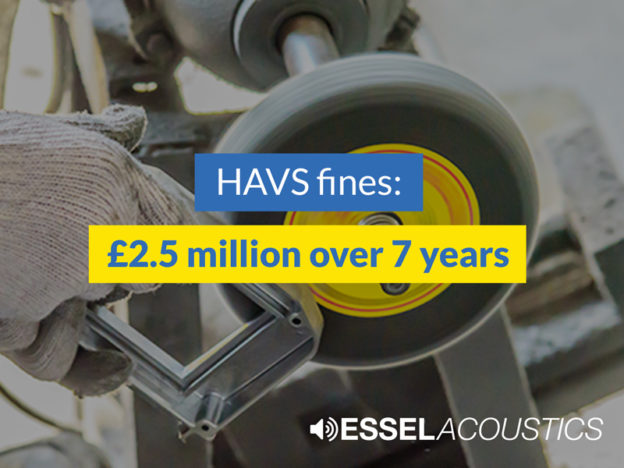Repeated exposure to vibration from operating power tools can lead to a condition known as hand arm vibration syndrome (HAVS). HAVS is a collective term given to debilitating disorders of the blood vessels, joints, and connective tissues of the hand and lower arm, and it is irreversible.
It’s very unfortunate that businesses over the last few years have neglected to protect employees against HAVS injuries, and this has resulted in prosecutions with the imposition of very large six-figure fines in some cases. What is more unfortunate is the HUMAN cost of this injury. Employers are duty bound to protect staff under the Control of Vibration at Work Regulations (2005).
The table below indicates (×), over the last 7 years, the parts of the regulations (reg) that the businesses ignored and this resulted in the prosecutions where total fines excluding costs exceeded £2.5 million. The individual fines are also shown in the table.
| Year | Nature of Business | Fine (excl. costs) | Risk Assessment (Reg 5) | Health Surveillance (Reg 7) | Info, Instruction, & Training (Reg 8) |
|---|---|---|---|---|---|
| 2018 | Aerospace | £80k | | ||
| 2018 | Construction | £500k | | ||
| 2018 | Aerospace | £400k | | | |
| 2018 | Housing Association | £30k | | | |
| 2018 | Manufacturing | £50k | | | |
| 2017 | Housing Association | £100k | | | |
| 2017 | Manufacturing | £20k | | | |
| 2017 | Local authority | £150k | | ||
| 2017 | Manufacturing | £120k | | |
|
| 2016 | Local authority | £250k | | | |
| 2016 | Manufacturing | £200k | | | |
| 2016 | Construction | £280k | | ||
| 2014 | Aerospace | £50k | | |
|
| 2015 | Truck manufacturing | £50k | | | |
| 2014 | Aerospace | *£125k | | ||
| 2013 | Aerospace | **>£27k | | ||
| 2013 | Mechanical parts | £52k | | | |
| 2013 | Aerospace | £60k | | ||
| 2013 | Automobile | £23k | | ||
| 2012 | Transport | £68k | | ||
| 2011 | Automobile | £80k | | |
*Failed to act on the risk assessment carried out
**Failed to act on health surveillance findings
The table shows that the major failure was the result of businesses not carrying out a risk assessment, or one that was neither suitable nor sufficient. Management, including those representing health and safety should be aware that where particular power tools are used for significant lengths of time, then there is a likelihood of HAVS developing. Under these circumstances, according to the regulations, a risk assessment shall be carried out and it must be conducted by either a competent person or a specialist.

A suitable or sufficient risk assessment should be able to determine whether staff are clearly at risk, and if so then one of the outputs of the assessment shall be the provision of health surveillance by the employer. Health surveillance should alert employers to early signs of the illness which may be prevented before progressing to an irreversible state. In the above table where risk assessments were not carried out it would have been highly unlikely that health surveillance was advised or provided.

Another output of the risk assessment shall be the duty to provide suitable and sufficient information, instruction, and training, to operatives. The training would enable staff to recognise the early signs of HAVS and report it in time to prevent development into a permanent state. In the above table where risk assessments were not undertaken, it was also highly unlikely that the employers would have been made aware of their duties to provide suitable information, instruction and training. The onset of HAVS may therefore have gone unrecognised due to lack of awareness.
Employers must ask themselves the following questions: What would the impact be on their business if faced with such penalties, both financially and otherwise? Does the business not have a moral responsibility to protect the staff against such ill health? For a small fraction of the cost could all this not have been avoided?
A free guide to conducting a hand arm vibration (HAV) risk assessment is available for download. It explains, amongst other things, when you should carry one out, and what constitutes a competent risk assessment. Click here to receive it.

